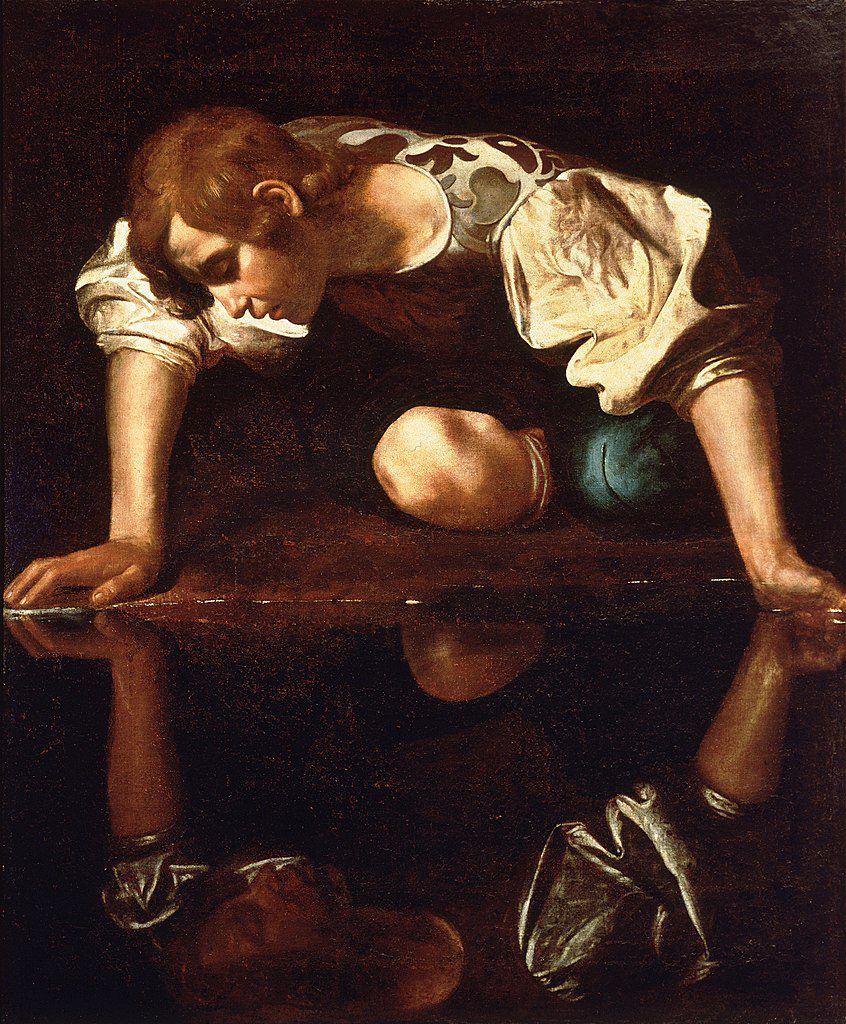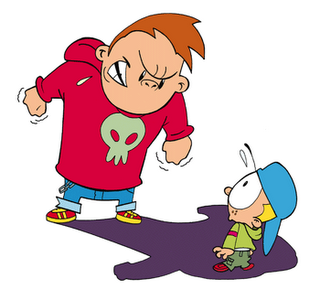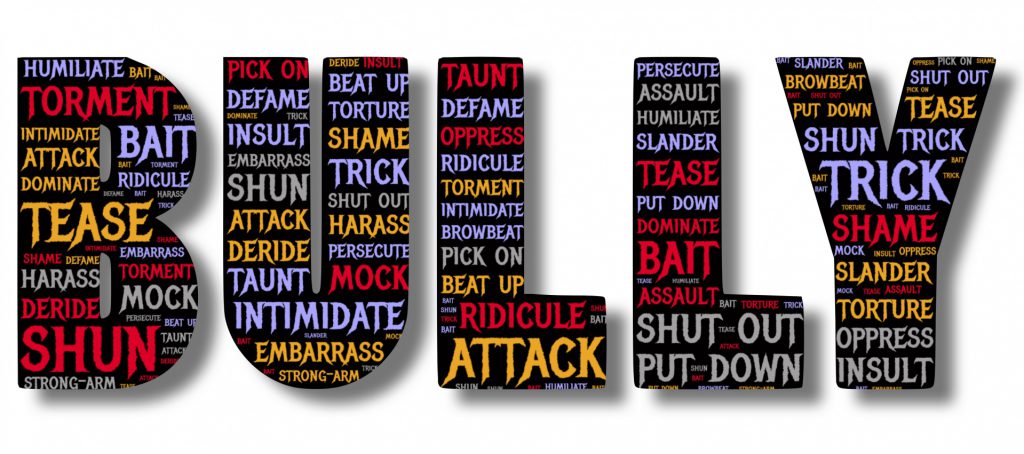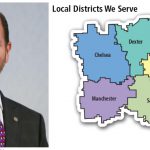After decades in the spotlight and two years as president, we still dance around the truth: Donald J. Trump is a schoolyard bully. He is a narcissist and a bully.
It’s really that simple. Once you accept that, it explains almost everything else.
Such pronouncements are not made lightly. These conclusions were only reached after careful observation and testing of various hypotheses to explain the president’s behavior. Those hypotheses did not fit the observed data. A lot of time was spent trying to give Trump credit, trying not to judge harshly, and trying to avoid assuming such negative things about him. In the end, the only hypothesis to explain most of his behavior is that what you think you see is what you get. A narcissist and a bully. Simple solutions often work best.
Sure, sure. None of this sounds like anything new. You’ve heard people call Trump a bully or a narcissist before. Ah, but labeling someone differs from actually using the label to interpret actions and assess the consequences.
See, most journalists, opinion writers, and pundits label him a bully or a narcissist for a single action or two. Then they stop there. They don’t apply the terms beyond that moment. Oh, they might harken back to the labels from time to time. But fail to apply them to Trump in toto. Instead, the media retreats back to comfortable analyses that would apply to a normal politician or a normal businessman. Even as they exclaim that Trump breaks the norms.
Unsurprisingly, these media analyses don’t end up really explaining Trump’s behavior. So, when Trump next does something, the media scratches their heads, mystified and hastily tries to slap on yet another ill-fitting explanation. As a result, they and the rest of us keep overlooking the bigger picture and the long-term consequences to our politics and our society.
UNDERSTANDING NARCISSISM

But let’s not get ahead of ourselves. To understand Trump, we have to do more than slap some labels on him. We need to understand what narcissism and bullying mean.
In Trump’s case, the two intertwine. Narcissism and bullying both tend to develop as coping mechanisms for low self-esteem and fragile egos. Further, narcissists and bullies tend to exhibit overlapping behaviors. Thus, unsurprisingly, narcissists frequently become bullies, as Trump has done.
In order to understand Trump as a bully, we must first therefore understand what makes him a narcissist.
Since Trump threw his hat into the presidential ring in 2015, several psychiatrists and psychologists have described Trump as a narcissist, some even going so far as to diagnose him with narcissistic personality disorder.
The roots of narcissism lie in insecurity. “[T]he superiority displayed by narcissists is actually a mask – a psychological defense…The narcissist cannot tolerate being vulnerable.” In Trump’s case, given his father’s demanding demeanor and need to control, it would be entirely natural for the son and heir to grow up feeling inadequate living in his father’s shadow, constantly seeking approval but never quite meeting his father’s exacting standards. This would lead to insecurity and a fragile ego, which Trump would protect from vulnerability through defensive masks, such as narcissism and bullying.
While narcissism does not necessarily rise to the level of mental illness, narcissistic personality disorder does. As such, the Diagnostic and Statistical Manual of Mental Orders (DSM) sets forth criteria for the disorder, which provide useful guidelines, even when only discussing narcissism generally.
Let’s see how well the criteria fit Trump. In order to be diagnosed with narcissistic personality disorder, individuals must have at least five or more of the nine possible symptoms. The individual must also not possess any commensurate qualities or accomplishments that might otherwise sensibly motivate these symptoms. The symptoms themselves must be severe enough to impair function in at least one of two ways. The symptoms are:
- Grandiosity with expectations of superior treatment by others.
- After being feted by President Macron of France, Trump ordered the Pentagon: “I want a parade like the one in France.”
- Trump pushing the leader of Montenegro out of the way so he could be front and center at the G20 summit.
- Fixated on fantasies of power, success, intelligence, attractiveness, etc.
- Trump’s tales of his accomplishments, including spinning a huge fortune out of $1 million loan, are fantasy.
- Trump’s repeated assertions about himself in superlative terms. For example, Trump dictated the letter from a doctor about his health during the campaign, which read in part, “If elected, Mr. Trump, I can state unequivocally, will be the healthiest individual ever elected to the presidency.”
- Self-perception of being unique, superior, and associated with high-status people and institutions.
- Needing constant admiration from others.
- Trump’s constant holding of campaign style rallies where crowds can cheer him.
- The 2017 cabinet meeting where Trump solicited praise as if he were a feudal king.
- Sense of entitlement to special treatment and to obedience from others.
- Cries of “fake news” and attacks on the media to the point of taking Jim Acosta of CNN’s press credentials away rather than answer his questions.
- Trump demanding personal loyalty from James Comey.
- Exploitative of others to achieve personal gain.
- Trump’s long history of not paying contractors for their work.
- Unwilling to empathize with others’ feelings, wishes, or needs.
- Trump’s family separation policy, which we now learn went on longer and involved more children then we previously understood. Horrible, yet Trump still has shown no real remorse for his policy.
- Intensely jealous of others and the belief that others are equally jealous of them.
- Trump implies people criticize him due to jealousy.
- His criticism and need to put down Barack Obama and Jeff Bezos, head of Amazon, appear to arise from Trump’s jealousy of Bezos’ success and the respect awarded Obama.
- Pompous and arrogant demeanor.
- Trump refuses to interact with the public when abroad.
- He even doesn’t like mingling with other heads of state, as seen by the recent Armistice Day celebration in France, when he did not travel to the ceremony with the other world leaders.
The individual must have these symptoms without the qualities or accomplishments to back them up. A famous and well-respected singer is not necessarily narcissistic simply for projecting an air of superiority while bragging about their musical accomplishments. However, Trump lacks those accomplishments. As we now know from a recent New York Times investigation, Trump’s supposed successes were not built on his own abilities, but his father’s name and business acumen, as well as money and real estate Trump’s father gave to Trump over the years.
The guidelines add further qualifications to the the symptoms. They must be severe enough to:
- Impair the individual’s ability to develop meaningful relationships with others;
- Trump demands loyalty, but we see no real evidence of true friendships. His behavior led to two divorces and multiple affairs.
- The pattern of people forced out of his administration indicates that Trump prefers sycophantic relationships to honest ones.
- Reduce an individual’s ability to function at work.
- Tony Schwartz, the ghostwriter of Art of the Deal, said of Trump, “It’s impossible to keep him focused on any topic, other than his own self-aggrandizement, for more than a few minutes.”
Trump exhibits every symptom and fulfills all qualifiers. For each Trump example above, there exist many, many more. No wonder then that Dr. Allen Frances, who helped write the DSM, said “Trump is an undisputed poster boy for narcissism.“
UNDERSTANDING WHAT MAKES UP BULLYING

Now that we have a better handle on narcissism, let’s take a look at how it tends to lead to bullying.
Two types of people are more likely to become bullies:
- Those that “are well-connected to their peers, have social power, are overly concerned about their popularity, and like to dominate or be in charge of others”; and
- Those that “are more isolated from their peers and may be depressed or anxious, have low self esteem, be less involved in school, be easily pressured by peers, or not identify with the emotions or feelings of others.”
If you refer back to the narcissist checkboxes, you will see some obvious parallels to both of these types of people and narcissist traits.
Social power, concerned about popularity, likes to dominate and be in charge – Sounds like a narcissist.
Low self-esteem, lacking empathy for others, impaired connections with others – Sounds like a narcissist too.
In short, narcissists, like Trump, already exhibit the types of personalities that tend to bully others. Thus, it is no surprise that they often become bullies, as Trump has done.
BULLY HALLMARKS
But what is bullying? Let’s take a look at some guidelines, based on the works of Barbara Coloroso, particularly, The Bully, the Bullied and the Bystander. Again, with reference to Trump’s own behavior. Note how well these traits overlap with the behaviors of a narcissist.
First, bullying is marked by all four of the following:
- An imbalance of power.
- An intent to harm, not limited to physical harm. It can include emotional, social, economic, or others forms of harm as well.
- The threat of further aggression.
- Meant to induce terror, fear or, essentially, submission.
Trump’s imbalance of power first manifested through the wealth, social status, and business name he inherited from his father, then from his position at the head of the United States government. Look at some examples of that imbalance of power combining with the other three factors above in Trump’s bullying behavior:
- Trump used his wealth and social status to threaten to litigate to death any suits filed by contractors or employees to collect payments Trump owed them. He made these threats repeatedly, to make the contractors and employees afraid of suing them, with the intent of harming them via lost income and wages. “Trump’s history reveals a specific pattern…If he was faced with a lawsuit, Trump would either settle out of court, or, more often than not, threaten to drag out the legal process for as long as he could, making it financially unfeasible for a small, independent business to successfully litigate a claim.”
- Trump uses his position as president to threaten families with separation from their children, restrictions of the asylum laws, and shutting down all immigration at the southern border entirely in order to make refugees afraid to approach the U.S. border and risk a crossing.
- Trump uses his position as leader of the United States to insist on certain foreign trade arrangements, and threatens tariffs to make countries, like China, afraid of doing anything but capitulating to Trump’s demands.
Second, bullying is also about contempt rather than anger. The contempt serves as an excuse to put someone down so the bully can feel up, such as Trump’s repeated name-calling designed to belittle others and aggrandize himself. This contempt brings with it three psychological advantages which allow the bully to harm others without feeling empathy, compassion or shame:
- A sense of entitlement, including the right to control, dominate, subjugate, and abuse another human being.
- Trump asserts a right to dominate, often with no apparent understanding that the United States is not an authoritarian state. He not only calls negative press “fake”, he also has threatened to change libel laws to make it easier for him to sue. As white-collar litigator Richard Roth puts it, “He’s trying to usurp the judiciary.”
- Trump has also sought to usurp the independence of the Department of Justice in repeated attempts to get them to investigate and prosecute Hillary Clinton simply because she was (note: past tense) his political opponent in the 2016 election. “So why aren’t the Committees and investigators, and of course our beleaguered A.G., looking into Crooked Hillarys crimes & Russia relations?” [sic]
- Intolerance of differences.
- In the wake of the 2017 Unite the Right rally (really unite the alt-right, i.e., white supremacists and nationalists) in Charlottesville, Virginia, in which one woman was killed, Trump showed sympathy for the white supremacists: “You also had some very fine people on both sides.”
- Trump shared on Twitter anti-Muslim videos posted by a British ultranationalist group without vetting them. Almost everything about the videos was debunked or grossly misleading.
- Liberty to exclude, i.e., to bar, isolate, and segregate a person deemed not worthy of respect.
- Trump and his father had a history of trying to exclude African-American tenants.
- Trump’s call for a “total and complete shutdown of Muslims entering the United States” and the various executive orders seeking to carry out that Muslim ban.
- “Why are we having all these people from shithole countries come here?”
Once again, Trump’s behavior meets all the criteria. Once again, for each Trump example above, there exist many, many more. The label fits. Trump is a bully too.
.Also, remember the earlier point that insecurity and the need to prop up a fragile ego lie at the root of both narcissism and bullying? Narcissism defensively masks the narcissist’s feelings of vulnerability and insecurity. Similarly, the bully’s need to put people down rests on his need to feel up, i.e., insecurity. Trump’s narcissism and his bullying, driven by the same root causes and exhibiting overlapping behaviors, completely intertwine.
Based on personal observation, narcissists and bullies tend to share the following additional traits, all of which have also been used to describe Trump.
- Picking up people manipulation skills, usually by trial and error. The first person they learn to manipulate is themselves.
- Perceived charisma, arising from those people manipulation skills.
- Exhibiting a winners-versus-losers-only world view or zero-sum thinking.
- Gravitating toward authoritarianism and demagoguery by default, not necessarily design.
BULLY RESPONSES TO CONFRONTATION

Finally, we also need to understand how a bully reacts when confronted. The bully wants to avoid taking an ego blow, which means he will try to wriggle out of taking any blame or facing criticism. He will try to deflect, flip the script, and otherwise flail around desperately, using any trick that comes to mind, in an attempt to escape scorn or reprobation. Among the things a bully may do when called out:
- Deny that they did anything wrong.
- Trump described the Trump Tower meeting between his campaign and Natalia Veselnitskaya as “totally legal.”
- “No collusion.”
- Trivialize the event.
- In the wake of reporting that Trump tried to conceal the details of his meetings with Russia’s Vladimir Putin, “We have those meetings all the time; no big deal.”
- Counterattack.
- Claims to be the victim, i.e., the actual victim started it.
- Trump’s response to his re-Tweeting an unkind photo of Ted Cruz’s wife while on the campaign trail: “He started it.”
- Counts on support of bystanders to defend his actions.
- Trump eggs on supporters to call out all criticism of him as Trump Derangement Syndrome, even when the criticism comes from all sides of the political spectrum, such as with Trump’s order for immediate withdrawal from Syria in December 2018.
Also, think back to the playground of your childhood. You may also have heard bullies use these additional defenses:
- “That other guy did it”, or whataboutism. Sometimes it takes the form of “If I did something wrong, so did he; so he definitely should be punished/there is blame on both sides”– This is related to the “he started it” defense above.
- “Tear gas was used on average once a month during the Obama administration for very similar circumstances.”
- Numerous false equivalencies such as equating racists with those who oppose intolerance, or asylum seekers fleeing criminals to criminals and terrorists.
- Variation to “the other guy did it”: “Someone else did it; it wasn’t me.”
- Trump on his family separation policy, “I hate the children being taken away. The Democrats have to change their law. That’s their law.” Trump falsely tried to depict the situation as one in which he had no choice; he was merely following the law others had made.
- “I know you are, but what am I?” or “I’m rubber, and you’re glue; whatever you say bounces off of me and sticks to you.”
- “No puppet; no puppet. You’re the puppet.” Seriously, that remark was so schoolyard, we should have all given up talking about Trump as anything else at that point.
- “I was told not to do X; I did not specifically do X; so I didn’t do anything wrong” [i.e., the letter of the law/literal defense]
- In the wake of Michael Cohen’s pleading guilty to paying hush money to women in violation of campaign finance laws at Trump’s direction, Trump said “I never directed Michael Cohen to break the law”, i.e., he never explicitly told Cohen to do something illegal, thus it was totally legal, and Trump did nothing wrong. Hint: that’s not how law works.
- “I was just defending myself after he started it.”
- In response to Trump attacking Mika Brzezinski on Twitter, Melania Trump’s spokeswoman said on her behalf, “When her husband gets attacked, he will punch back 10 times harder.” This phrase has been echoed by other family members when talking about Trump. Trump has used the phrase as well, when talking about foreign relations.
- “It’s my word against yours; who are they going to believe?”
- Trump uses this approach to every sexual misconduct claim against him.
- Trump also adapted this approach to paint Christine Blasey Ford as a flake, and Brett Kavanaugh as a saintly victim of unjust persecution.
- “I never said that; you can’t prove I said that”
In Trump’s case, we need to stay aware of how he acts like a bully in all things. When Trump faces reproach, criticism, or potential failures, he flails around desperately trying every trick in the bully arsenal to defend against any incoming ego blows. We need to recognize that all his deflections and script flipping arise from the same bullying behavior as his threats and contemptuous chest-thumping.
Trump’s behavior and his contradictions don’t end up making sense when we try to assess him as a businessman or a politician. However, when we start thinking of his behavior in terms of narcissistic bullying, everything begins to fall into place.
But understanding what it truly means that Trump is a narcissist and a schoolyard bully is just the beginning. The media and the rest of the nation need to better incorporate that understanding into their analysis of Trump. Silence enables this kind of behavior. That silence has to end.
Please be sure to check out the rest of The Schoolyard Bully Pulpit
Ann Anderson is a contributing writer for Torchlight and, when time permits, for her own blog on social and political topics, Strigiforms.com. She has a familiarity with the legal profession, history, and an eclectic potpourri of informational tidbits. She can be reached at ann.anderson@torchlightmedia.net.


